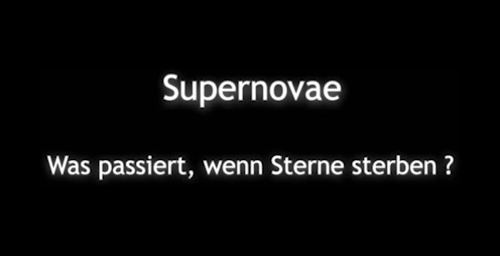

Core-Collapse Supernova Data Archive
Core-Collapse Supernova Movie Archive
People contributing to this archive

Gravitational core-collapse events and supernova explosions are among the most powerful cosmic phenomena, releasing more energy within seconds than stars like the sun produce in billions of years. They terminate the lives of massive stars, giving birth to neutron stars or stellar-mass black holes, and are responsible for the production of about half of the chemical elements heavier than iron. By far most of the energy release occurs in the form of elusive neutrinos, elementary particles that are abundantly produced when the hot, compact remnant settles and cools. Though only a small fraction of the gravitational binding energy are converted to gravitational waves, supernovae are among the most intense sources of these spacetime perturbations. Both neutrinos and gravitational waves are unique probes of the physical processes that take place in the deep interior of dying stars. Huge experimental facilities, neutrino detectors in the eternal ice shield of the South Pole and in deep underground laboratories as well as kilometer-scale interferometric gravitational-wave antennae are therefore continuously searching for such signals of stellar catastrophies.
Stellar explosions are generically multi-dimensional phenomena. This fact has been concluded for the first time from observations of Supernova 1987A, but all of its implications are recognized only as computational models of supernova explosions become increasingly more sophisticated and begin to be advanced to the third dimension and to longer evolution periods. This has led to a better understanding of the role of neutrinos for driving the explosion, to new insights into the characteristics of the neutrino and gravitational-wave emission of supernovae, and to the discovery of links between pulsar kicks and spins, supernova nucleosynthesis, and the origin of asymmetries seen in the gaseous remnants of stellar explosions.

Two-dimensional computer simulation of the explosion of a
15 solar-mass star 0.70 seconds after core bounce;
diameter of displayed region: 1500 km (A. Marek, M. Rampp (RZG),
see Marek & Janka, ApJ 694 (2009) 664).
|

Three-dimensional computer simulation of the explosion of a
15 solar-mass star 0.50 seconds after core bounce;
diameter of displayed region: about 4000 km
(L. Scheck, PhD Thesis 2007;
see Woosley & Janka, Nature Physics 1 (2005) 147).
|
The Core-Collapse Modeling Group at the Max Planck Institute for Astrophysics participates at the forefront of worldwide theoretical modeling efforts of stellar collapse and explosions and of their observable signals (neutrinos, gravitational waves, heavy elements), using state-of-the-art numerical tools and being linked to national and international collaborations. It is funded by the Deutsche Forschungsgemeinschaft (DFG) through two Transregional Collaborative Research Centres (SFB/TR 7 and SFB/TR 27) and the Cluster of Excellence for Fundamental Physics (EXC 153). Computer time grants are kindly provided by the Rechenzentrum Garching (RZG), the High Performance Computing Center Stuttgart (HLRS), the Leibniz-Rechenzentrum (LRZ), the John von Neumann Institut für Computing (NIC Jülich), and the Distributed European Infrastructure for Supercomputing Applications Consortium (DEISA).

A short video in German about Supernovae for a general audience in
360p (59MB),
also available in
480p (111MB),
720p (200MB) and
1080p (701MB).
Copyright Max-Planck-Gesellschaft, 2013.

|

|
|
SFB/Transregio 27 "Neutrinos and Beyond" | SFB/Transregio 7 "Gravitational Wave Astronomy" |